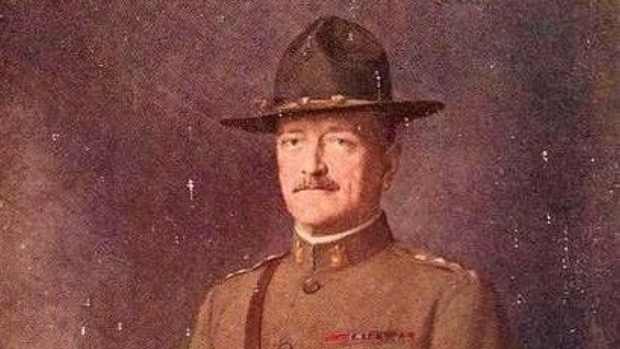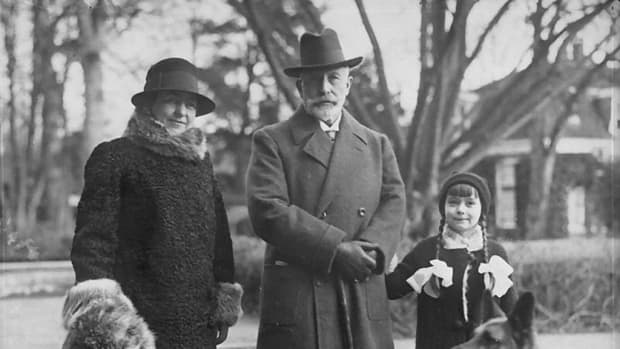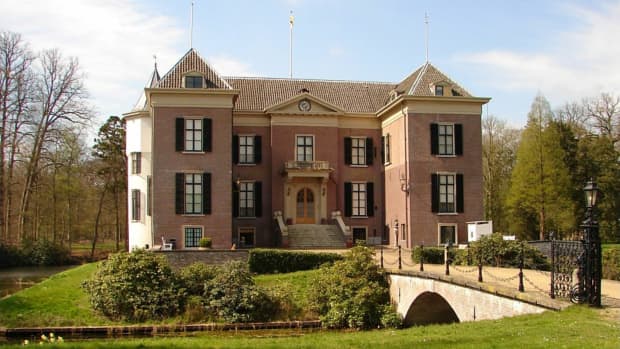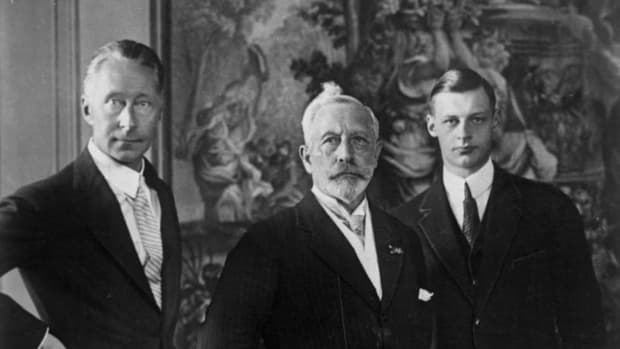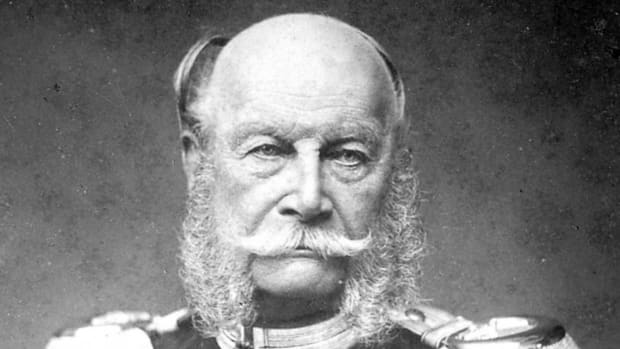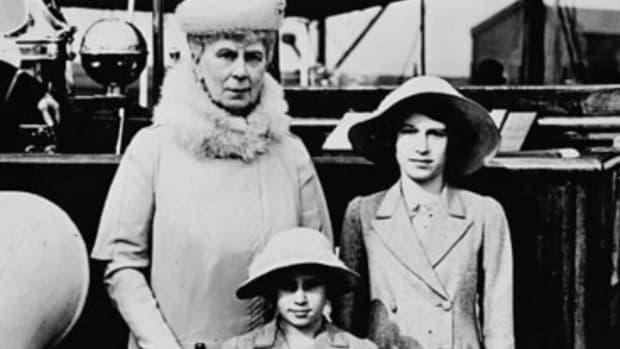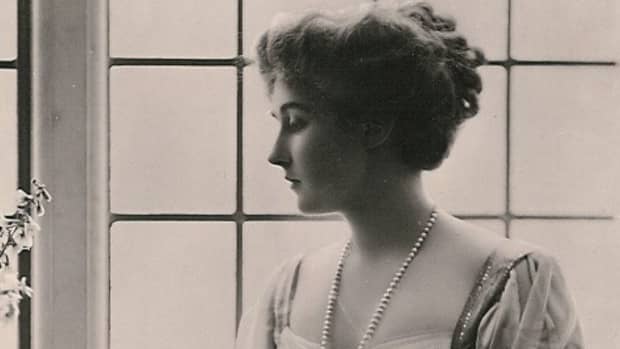"Mossy": Princess Margaret of Prussia, Kaiser Wilhelm II's Sister
Mossy: Princess Margarete Beatrice Feodora of Prussia
Princess Margaret of Prussia was the youngest child of Crown Prince Friedrich of Prussia, later the kaiser for 99 days, and Victoria, the eldest daughter of Queen Victoria and Prince Albert of Saxe-Coburg-Gotha.
She was born on 22nd April 1872 at the Neues Palais (New Palace) in Potsdam near to Berlin and she was christened Margarete Beatrice Feodora; Margarete was in honour of her godmother Crown Princess Margherita of Italy.
Her nickname was given to her as a result of the thick, matted hair that she had as a baby. The name Mossy stuck with her throughout her life.
Mossy's oldest siblings were Wilhelm, the future Kaiser Wilhelm II, Charlotte and Heinrich. In traditional Prussian court style, they were reliant on their governess and less so on their parents. Victoria, Waldemar, Sophie and Mossy arrived after their brother Sigismund's death in 1866. Victoria and Friedrich dealt with the court rules, and they spent a great deal of time with their younger children.
Victoria referred to Victoria (Moretta), Sophie and Mossy as "my three sweet girls." She called them her consolation.
They were raised at the Neue Palais and at the royal palace in Unter den Linden, Berlin. In 1887 the children travelled to England with their parents to celebrate Queen Victoria's golden jubilee.

Princess Margaret of Prussia was the daughter of Kaiser Friedrich III and Victoria, the eldest daughter of Queen Victoria and Prince Albert.
Wikipedia Public Domain
1888: The Year of Three Emperors
1888 was called "the year of three emperors". Mossy's father Friedrich became Kaiser Friedrich III on 9th of March when his father Wilhelm I died. Friedrich was dying from cancer and sadly, he only ruled for 99 days. Kaiser Wilhelm II started his reign on 15th June.
By this time, only Moretta, Sophie and Mossy were unmarried. When the others left home Mossy was almost always in her mother's company. Unlike Queen Victoria, who insisted that her youngest child Beatrice should remain at home with her forever, Mossy's mother encouraged and expected a union for her.
Prince Maximilian of Baden was the subject of Mossy's unrequited love; he was homosexual and he dutifully married Marie Louise of Hanover in 1900.
Matches with Russian and British royals were suggested and rejected. "Fischy", Prince Friedrich Karl of Hesse made a surprise proposal and he and Mossy married in Potsdam on 25th January 1893, the anniversary of her parents 1858 wedding.
Wilhelm knew that Fischy was not wealthy as he was a third son, and full of his usual charm her told Mossy that he consented to the union only because she was "so unimportant".
Schloss Friedrichshof and Family
The newlyweds lived at Rumpenheim Castle in Hesse. Their marriage was happy and six children, all boys, were born between 1893 and 1901. They had English nannies and the boys spoke English. Mossy was a frequent visitor to Britain. She sent two of her sons to an English school.
When Queen Victoria died on 22nd January 1901 it was Mossy that informed her mother who was by then suffering from fatal spinal cancer.
Victoria died on 5th August 1901 and Mossy inherited her beloved property Schloss Friedrichshof in Hesse and its precious artwork. She was her mother's choice of literary executor. The kaiser was ever-eager to malign Victoria's memory. Mossy defended it. The family left Rumpenheim to live in the home named after her father.
Mossy was in England in the days preceding the First World War and she returned to Germany on one of the last ships to leave English shores.
Fischy was injured early in the war, and he contracted blood poisoning. He was left unfit to fight again. Two sons, Friedrich and Maximilian, died in battle.

Prince Friedrich Karl, Landgrave of Hesse, known as Fischy, was Margaret of Prussia's husband.
Wikipedia Public Domain
Titular Landgravine of Hesse and Nazi Supporter
On 9th October 1918 Fischy was elected to rule the newly independent Finland. (It had been Russian). He had been proposed by the kaiser. As the war drew to an end Fischy tactfully renounced the throne. He cited his German passport, the fall of the German royal houses and that the ex-kaiser was his brother-in-law as reasons to decline.
He became the head of the House of Hesse in 1925 and this meant that he and Mossy were the titular Landgrave and Landgravine of Hesse.
As Mossy watched the Nazis take control and her sons fall under Hitler's spell, she too harboured anti-Semitic sentiments, despaired of Britain's criticisms and she hosted Hitler twice at Friedrichshof. Mossy and Fischy joined the Nazi Party in 1938.
Fischy died in 1940 and legend has it that his last act was a "Heil Hitler" salute. He was laid to rest at Friedrichshof.
Mossy lost another son, Christoph in 1943.
Mossy Dies on the Anniversary of Queen Victoria's Death
Friedrichshof was commandeered by the Americans in 1945; Mossy was given four hours to leave the castle. She lived in two rooms of a small cottage on the grounds. Friedrichshof was given back to her in 1953.
Her jewellery was hidden in the castle but it was discovered and smuggled to America in the 1940s. Only 10% of the jewels were returned to the Hesse family and the thieves were finally jailed in 1951.
Mossy passed away on 22nd January 1954. She was 81 years old. She died on the 53rd anniversary of her grandmother Queen Victoria's death. She was buried next to Fischy.
Today Friedrichshof is a hotel, Schlosshotel Kronberg.
The family graves remain on the grounds.
Sources
- Margaret of Prussia - The Emperor's Sister (Part one) - History of Royal Women
- Princess Margarete of Prussia, Landgravine of Hesse | Unofficial Royalty
- Hesse Emerald Tiara | The Royal Watcher
This content is accurate and true to the best of the author’s knowledge and is not meant to substitute for formal and individualized advice from a qualified professional.
© 2024 Joanne Hayle



